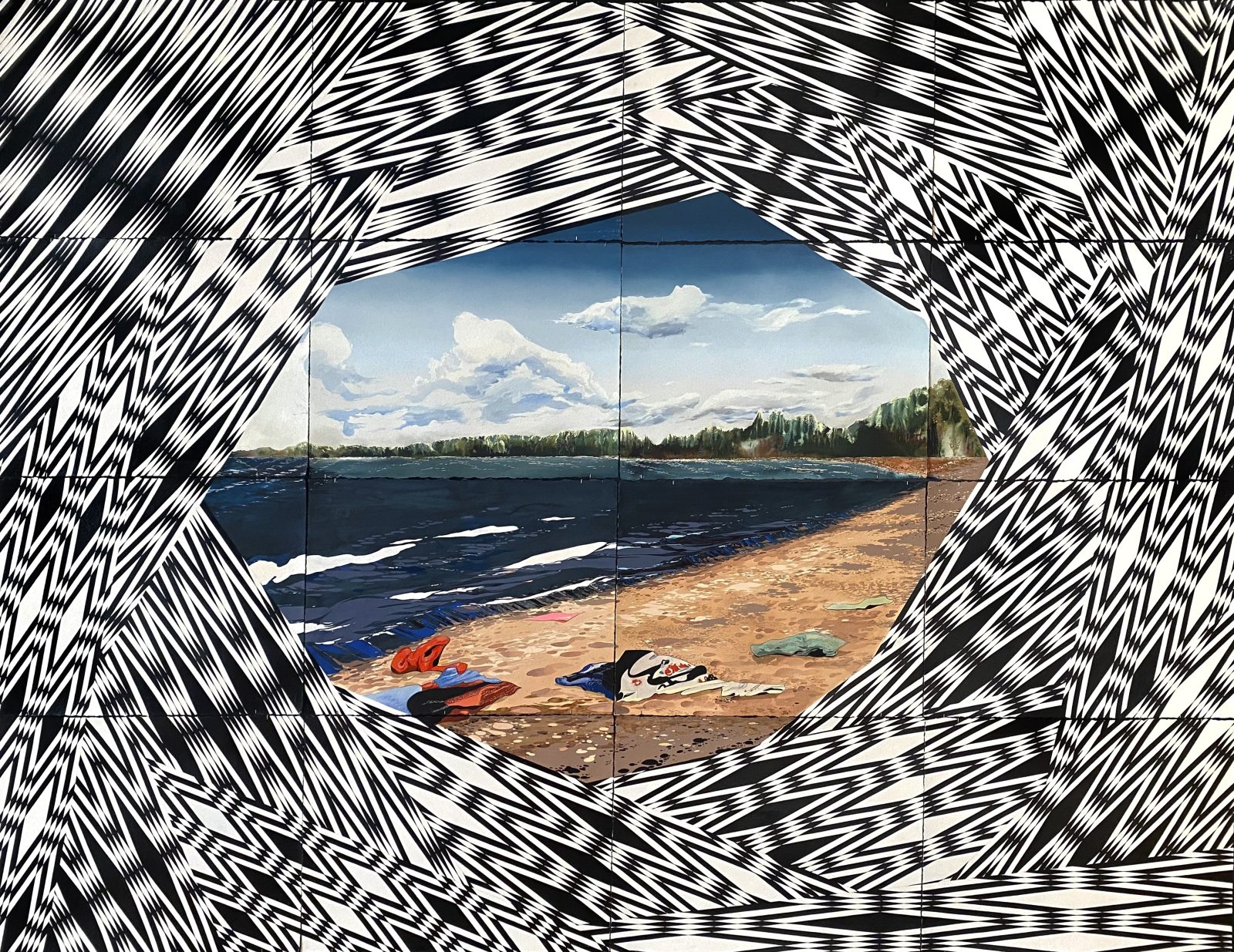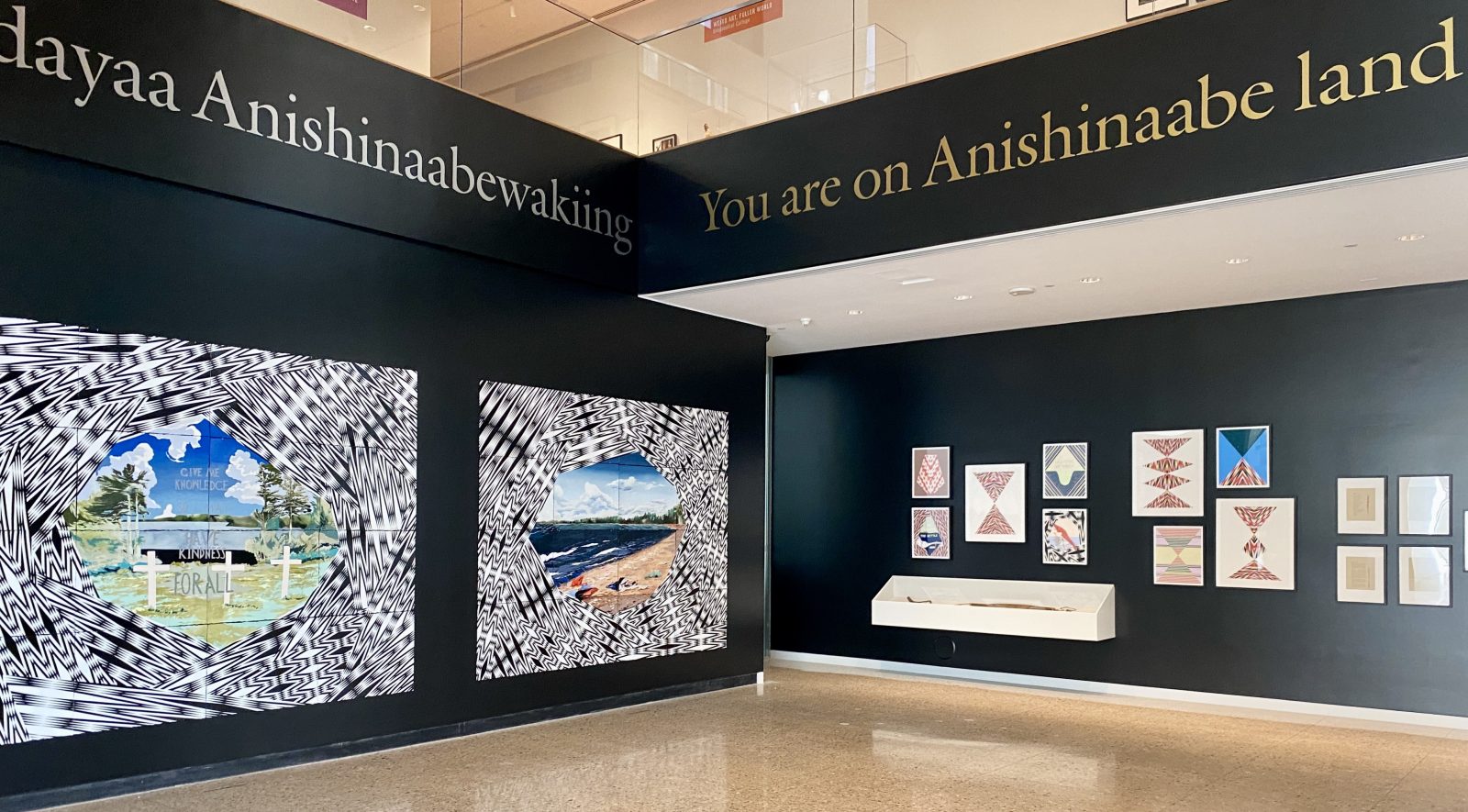Future Cache: Andrea Carlson remembers the Burt Lake Burn-Out

oil, acrylic, gouache, ink, marker, and graphite on paper
Photo by Jeri Hollister and Patrick Young, courtesy the University of Michigan Museum of Art
In the early hours of October 15, 1900, at the urging of a land speculator, law enforcement evicted the Ottawa and Ojibwe residents of a village on Northern Michigan’s Burt Lake, burning at least 77 homes to the ground. Known as the “Burt Lake Burn-Out,” the action displaced members of the Cheboiganing (Burt Lake) Band of Ottawa and Chippewa Indians. “This is a really, really hard story,” artist Andrea Carlson (Ojibwe) said at a recent talk at the University of Michigan Museum of Art (UMMA) in Ann Arbor. “It belongs to the Burt Lake people.”
The burn-out is one of many “colonial tactic[s] meant to sever us from ourselves,” she adds.
The incident got her thinking about “the idea of wholeness, the idea of belonging, and how a lot of Native people are constantly thinking that maybe in the future there will be some healing, some repair. It’s my understanding that we shouldn’t wait for the future—that wholeness is today, and that the future is today as well.”

Her new exhibition at UMMA, Future Cache, includes a 40-foot wall memorializing those displaced from Burt Lake, a banner declaring “You are on Anishinaabe land,” related paintings of imagined decolonized landscapes, and a symbolic cache of provisions. The show, created in consultation with members of the Cheboiganing band, takes its name, Carlson shares, from the dozens of pits, some dating to 1000 AD, mapped near the burn-out site.
“A cache is a hole in the ground that would sometimes be lined with clay and wood and you could keep your supplies for the winter, your supplies for traveling,” she says. “When I think of a cache metaphorically I think of the space where we can put things for our future, to imagine ourselves richly into the future, to imagine robust survival.”
Future Cache is on view through June 2024.